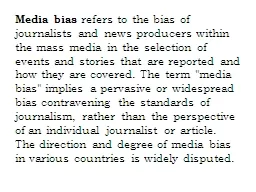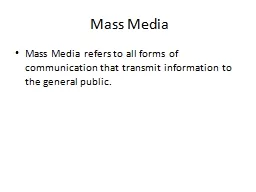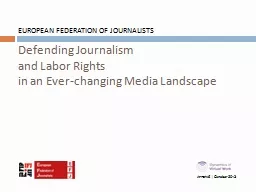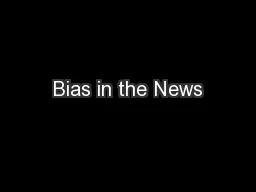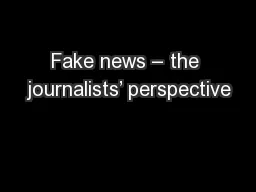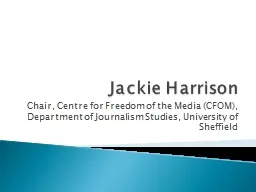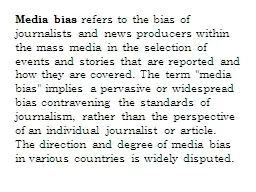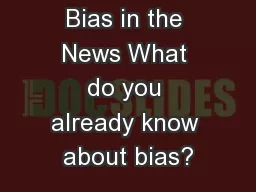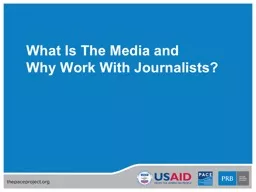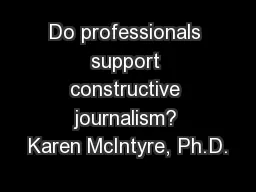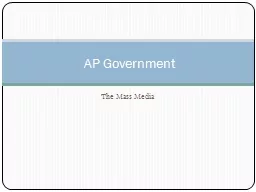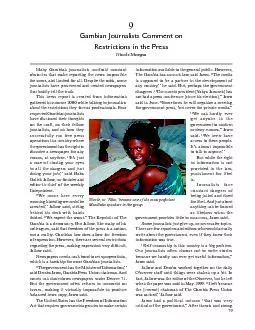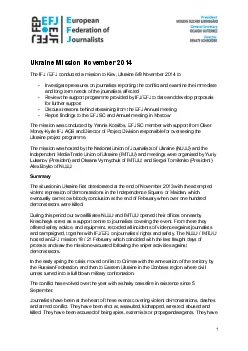PPT-Media bias refers to the bias of journalists and news producers within the mass media
Author : trish-goza | Published Date : 2020-04-06
The most commonly discussed forms of bias occur when the media support or attack a particular political party candidate or ideology but other common forms of bias
Presentation Embed Code
Download Presentation
Download Presentation The PPT/PDF document " Media bias refers to the bias of journ..." is the property of its rightful owner. Permission is granted to download and print the materials on this website for personal, non-commercial use only, and to display it on your personal computer provided you do not modify the materials and that you retain all copyright notices contained in the materials. By downloading content from our website, you accept the terms of this agreement.
Media bias refers to the bias of journalists and news producers within the mass media: Transcript
Download Rules Of Document
" Media bias refers to the bias of journalists and news producers within the mass media"The content belongs to its owner. You may download and print it for personal use, without modification, and keep all copyright notices. By downloading, you agree to these terms.
Related Documents

